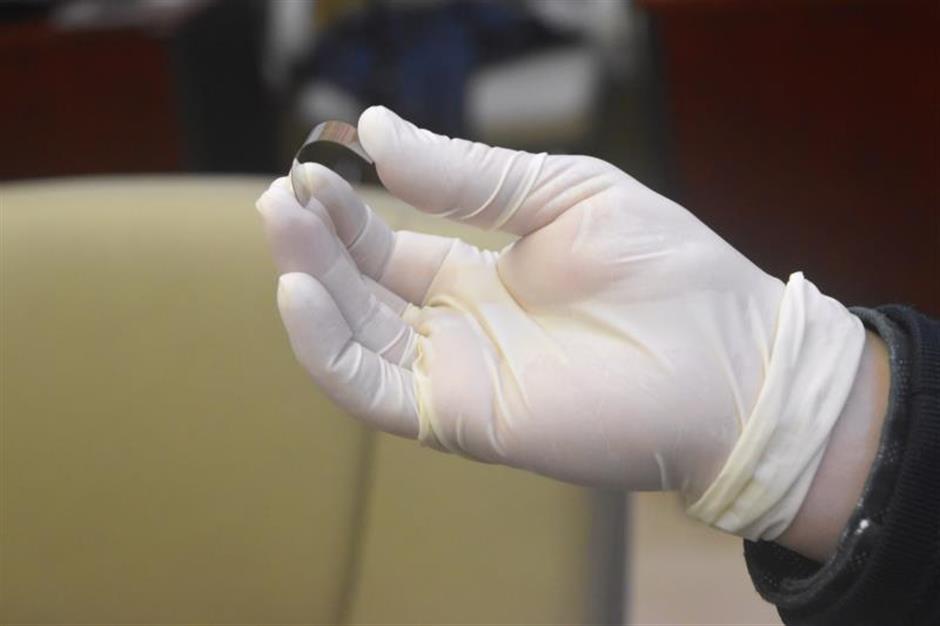Shanghai scientists make 2 breakthroughs in chemistry research

A sample of a piece of silver sulphide, the world’s first inorganic semiconductor material whose bendability, discovered by scientists in Shanghai.
Scientists from Shanghai's Institute of Ceramics have made two breakthroughs in chemistry research which may in future help develop new technologies in various fields to help us in our daily lives.
One of the breakthroughs is a new theory using non-toxic nanocatalytic medicine in chemotherapy to cure cancer, which would vastly reduce side effects and more precisely target cancer cells, the institute has said. It was published in Chemical Society Reviews, an authoritative international journal, in February.
Traditional chemotherapy eliminates both cancer cells and normal cells, so many patients suffer serious side effects. Shi Jianlin, one of the scientists who first came up with the theory, said a large number of cancer patients eventually die because of it.
Nanocatalytic medicine, however, would in theory remain non-toxic until it reached the cancer cells. Any medicine which entered normal organs would be degraded and excreted by the body.
Chen Yu, the other scientist in the team, said nowadays medical technology is advanced enough to precisely target tumors.
“The medicine will become toxic (once it reaches a cancer cell) because of the acid microenvironment of the tumor,” said Shi. “This chemical reaction will consume large amounts of oxygen, which will suffocate the cancer cell.”
The other breakthrough was the discovery of the world’s first inorganic semiconductor material, silver sulphide.
Chen Lidong, a member of the team who made the discovery in 2013, said it was a "happy coincidence."
“A student found he couldn’t shatter the material like other semiconductors during an experiment,” said Chen. While many people might consider it an annoyance, Chen and his team realized they might have found a new feature of the material.
Bendable material is widely used in the production of "smart" clothing, lightweight military devices and integrated health monitors. Currently, metal or organic non-metal has been used.
Both of the research projects the local scientists have been undertaking are still in the experimental stages.















